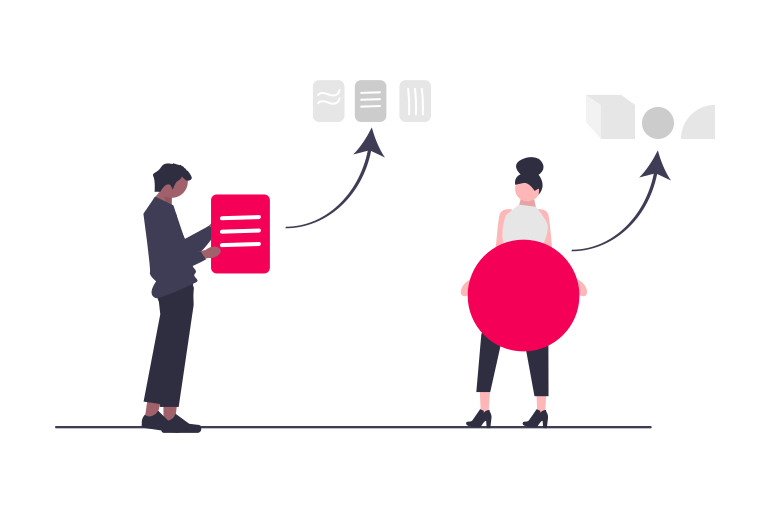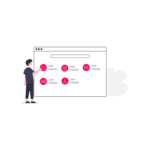In today’s digital world, gaining the attention of consumers in the sea of choices is an increasingly difficult task. Thus, programmatic advertisements are the new trend setters. Through these types of target advertisements, sellers capture their online market.
- But, what are programmatic advertisements?
- How can they be successfully implemented?
Also Read: How CWBChicago found assurance and reliability in AdPushup & expanded ad monetization outcomes
This article navigates through the essence of programmatic ads and attempts to find answers to:
- The new trends in programmatic advertisements.
- The level of success attained by them.
Did you Ask – What is Programmatic Advertising?
In layman’s terms, programmatic advertisements are the automatic buying and selling of online advertisements. Before this technology, ordering for a space, configuring the necessary requirements, and finally reporting on advertisements had to be done manually and naturally, which had been quite inconvenient.
Today, programmatic advertising carries out a more streamlined and, thus, more efficient and effective process that consolidates all the virtual advertisements in one platform. All the channels and every type of format can be accessed through this platform, owing to programmatic advertising that has built up its ad inventory and database.
In the US, advertisers spent $106 billion in 2021 for programmatic advertisements, and with a staggering 41% hike in these advertisements year after year, eMarketer predicts it will rise to $123.2 billion this year.
Here are the Hot Trends taking Programmatic Advertisements by Storm!
Marketers seem to be very confident in the strength of digital advertising as, according to Statista, digital ad expenditure globally is set to rise from approximately $521.02 billion in 2021 to the higher side of $876 billion by 2026.
Yet, like every other sector, programmatic ads have also been affected by the Covid pandemic due to the online security initiatives by software companies. Therefore, these new trends reset everything by providing the users with more control over their data, thus rejuvenating the programming advertisements sector. These new trends are…
How In-House Programmatic Campaigns Do the Magic?
Ten years ago, only a handful of businesses took care of buying programmatic advertisements, but today things have changed. According to a review of the Advertising Bureau (IAB), which dealt with the global programmatic market in 2020, even more than two-thirds (69%) either have brought their campaigns wholly or partly in-house.
This has made companies approach greater transparency in the programmatic process so that they can make their strategies for marketing even more valuable. Since in-house programmatic advertising removes the costs of managing services and data by third-party vendors, companies can invest in their own active marketing campaigns, which will result in an increased return on ads.
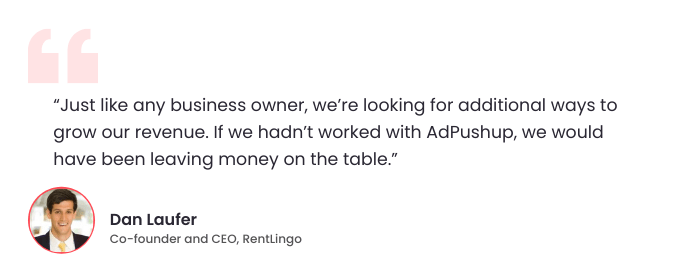
Digital Out-of-Home (DOOH) Advertisements – Here’s Why they are Advancing Fast
After two years of lockdown, as society is slowly emerging and getting used to the normal, marketers are searching for ways to target all these individuals who are back on the road, and DOOH is an example of a programmatic ad that works this out.
With expenditures that are expected to reach $2.58 billion in 2022 in the US, digital screens equipped with programming strategies are popping up everywhere in the country. Advantages of DOOH advertisements include:
- Larger reach
- Resistant to ad blockers
- Unobtrusive placements
Advertisement houses should benefit from DOOH. In the cookie-free future because it does not pose a threat to users’ privacy online. Brands can give contextual advertisements while providing an eye-catching experience to the customers through DOOH.
Also Read: Ad Tech Trends That We Can Expect in 2022
First-Party Data Solutions and Sunsetting Cookies – A Quality Substitute for Third-party data
Due to added security for the protection of users’ data, marketing has to be done without third-party data. Privacy laws such as the California Privacy Act of 2018 and Europe’s General Data Protection Regulation (GDPR) have made it almost illegal to track cookies to see the user’s online activities and modify advertisements.
To find a workaround to this restriction, shared user IDs have been taken as a viable option. An open-source framework called the Unified ID 2.0 (UID2) was developed by Trade Desk as Google moved to sunset cookies. It needs the users to consent via an email address.
With the departure of third-party data, the quantity of data will definitely shrink, but first-party data offers tremendous quality to advertisers, which will eventually be helpful.
The White Label Software- The Control Room!
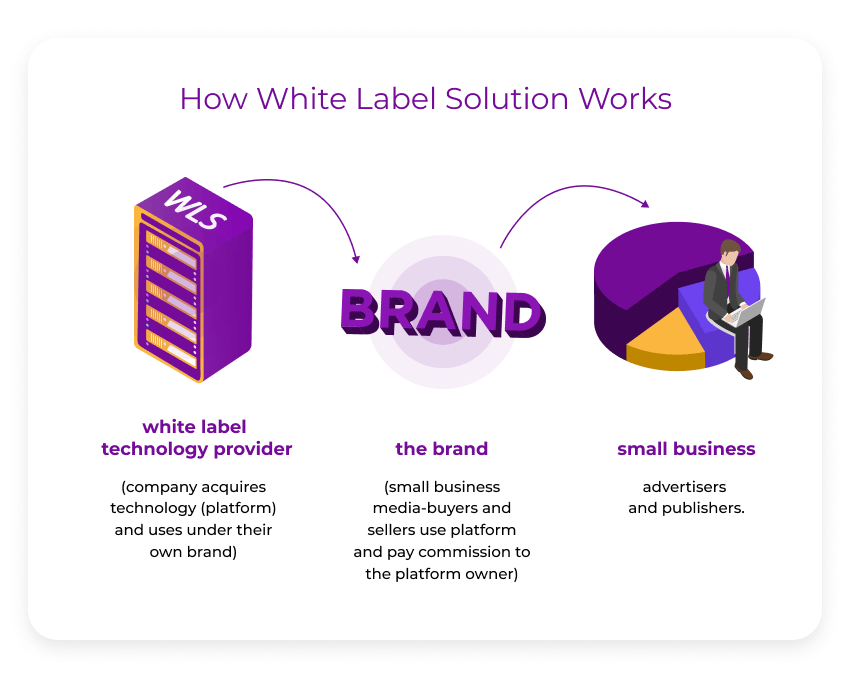
Image Source: Smartyads
A white-label software is a general software that is built for and brought to the market as a service to businesses. It provides an administrative level of control to the businesses that purchase the said software for their programmatic ads.
The benefits of white-label software include not only increased control of the brands over their ad campaigns but also transparency in the whole process of buying the ad.
Also Read: Everything at Hand: A Review of Epom Ad Server for Publishers
Thus, companies that are looking for higher control in their programmatic ad campaigns should opt for white-label software as a service (SaaS) model. It will be a more affordable and definitely better solution than developing its own platform.
Contextual Advertising – Ads Users will Love
Although this is one of the most straightforward methods of advertising, it still is one such programmatic trend that is ever on the rise, despite the restrictions on cookies. Since advertisements now are given based on the context of the website instead of a user’s online data, contextual targeting will only keep growing.
Since users are frustrated with seeing non-contextual and often irrelevant advertisements all over their online platform, it has led to banner blindness. Through contextual advertisements, advertisers will have to enhance their advertisements with relevant and personalized details in the right context so that they can receive a better response for their ads and their sales can see an increase.
Programmatic Audio is Another Name for Greater User Engagement
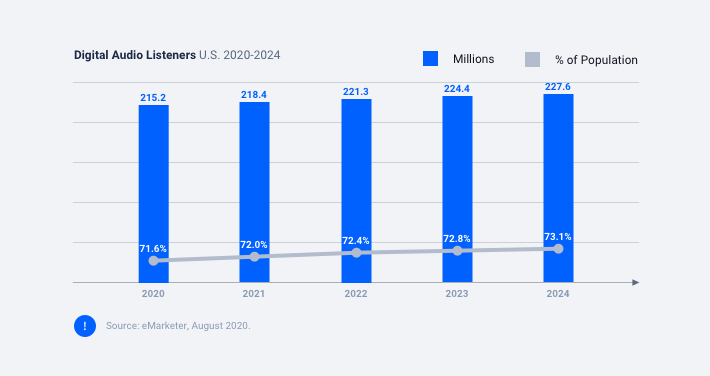
As the name suggests, programmatic audio is an example of programmatic ads that works in the same principle as programmatic displays but can be used in a more personalized manner, such as the automatic sale of advertisements in audio content like podcasts.
Advertisers can target their ads through various devices such as desktops, tablets, laptops, and smartphones by acquiring ad inventory from audio publishers via a single system.
Benefits of this type of programmatic ad include a larger engagement with people because they don’t rely on the visual medium. Another major advantage is that audio commercials, especially in podcasts or music apps, cannot be skipped. Since there are no ad blockers for audio ads, people will receive full exposure to the advertisement.
Video Ads – Get the Users Hooked to Your ads
Videos are consumed most on the internet. About 82% of internet traffic is consumed as video in 2022 alone. Video ads have such an impact on consumers that US advertisers are planning on spending almost $43 billion on them, which has risen from $36 billion last year.
Since programmatic video advertisements capture the lion’s share of programmatic digital display expenditure this year, it can be assumed video advertising is now the standard in programmatic commercials.
Mobile Games – The Heaven for Programmatic Ads
Games are one of the most engaging platforms, and as mobile games have a massive amount of popularity among teenagers and young adults, it proves to be quite lucrative for advertisers to add programmatic advertising to games.
Through in-game tokens and coins, ads can be directly integrated where they can watch a commercial to receive free tokens. The revenue of mobile gaming is predicted to increase from $124.9 billion in 2022 to $139.5 billion by 2026. This shows the success of programmatic advertisements through mobile games.
FAQs
The 4 major components making up the framework of the domain of the programmatic ad are:
DSP – Demand Side Platform
DMP – Data Management Platform
SSP – Supply Side Platform
Google Adx – Ad Exchange
Programmatic advertising is an automated technology for the process of buying ad space contrary to the manual or traditional methods of digital advertising.
This lets the marketers have 100% visibility over the campaigns and provides that kind of transparency. Marketers will be able to see where exactly their ad is being placed and what their ROI is.
Cookies have been pretty much the backbone of programmatic advertising since its inception.

Shubham is a digital marketer with rich experience working in the advertisement technology industry. He has vast experience in the programmatic industry, driving business strategy and scaling functions including but not limited to growth and marketing, Operations, process optimization, and Sales.
